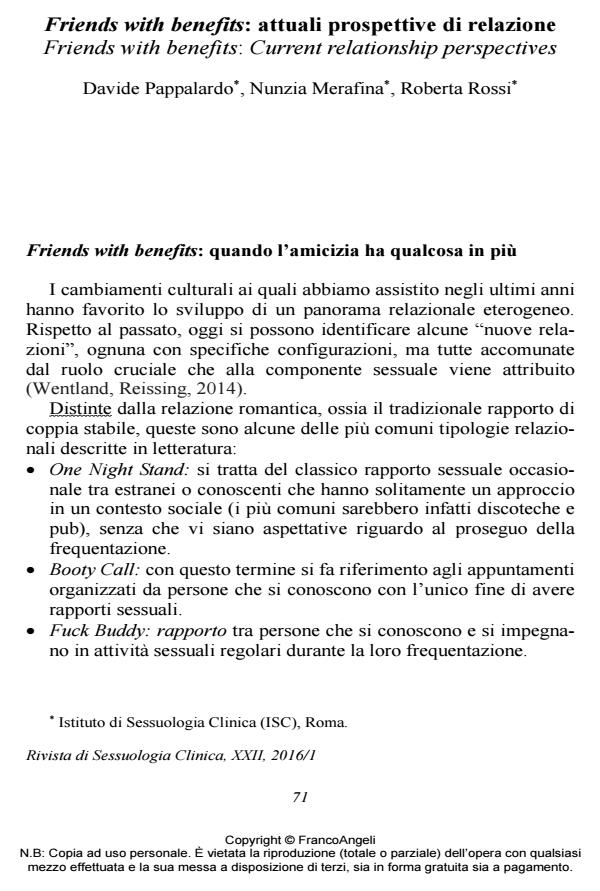Friends with benefits: Current relationship perspectives
Journal title RIVISTA DI SESSUOLOGIA CLINICA
Author/s Davide Pappalardo, Nunzia Merafina, Roberta Rossi
Publishing Year 2016 Issue 2016/1
Language Italian Pages 22 P. 71-92 File size 361 KB
DOI 10.3280/RSC2016-001004
DOI is like a bar code for intellectual property: to have more infomation
click here
Below, you can see the article first page
If you want to buy this article in PDF format, you can do it, following the instructions to buy download credits

FrancoAngeli is member of Publishers International Linking Association, Inc (PILA), a not-for-profit association which run the CrossRef service enabling links to and from online scholarly content.
Friends with benefits relationships are friendships characterized by a sexual component and nowadays they represent a widespread phenomenon. The aim of this paper is to offer an overview of this topic for a deeper understanding of the characteristics of these relationships. A systematic search of scientific articles published in the lasts 15 years was performed using PsychInfo and Pubmed. The focus of the review concerning incidence, frequency and quality of the friends with benefits relationships, emotional and sexual satisfaction, degree of commitment, advantages and disadvantages, gender differences and similarities. Future insights are desirable in order to provide more information about critical elements and resources of these relationships in order to intervene effectively on the possible psycho- sexological implications.
Keywords: Relationships, fwb, friendship, casual sex, sexual health
Davide Pappalardo, Nunzia Merafina, Roberta Rossi, Friends with benefits: attuali prospettive di relazione in "RIVISTA DI SESSUOLOGIA CLINICA" 1/2016, pp 71-92, DOI: 10.3280/RSC2016-001004